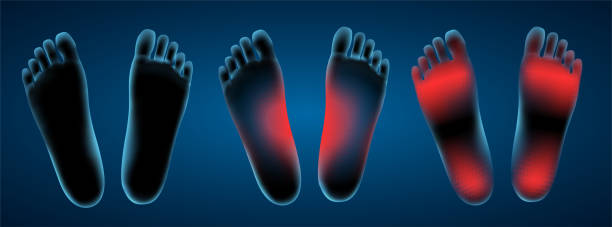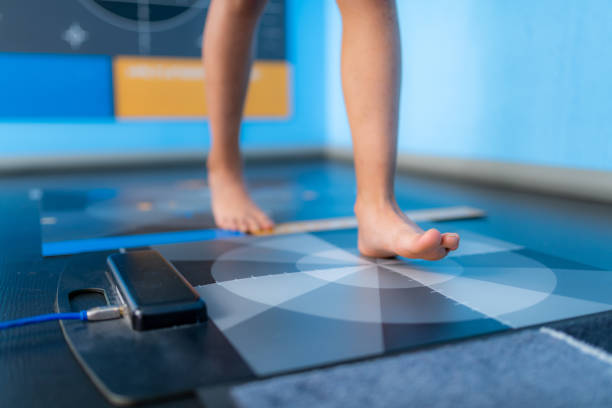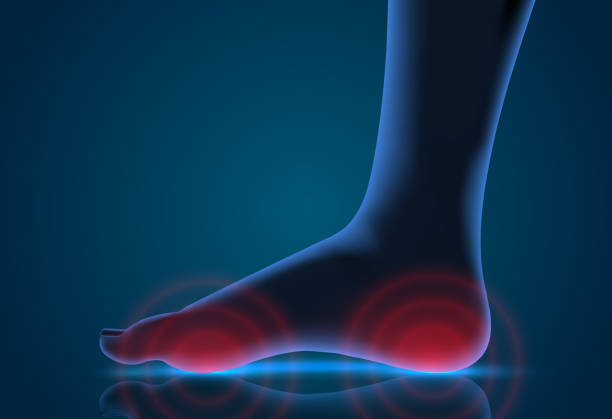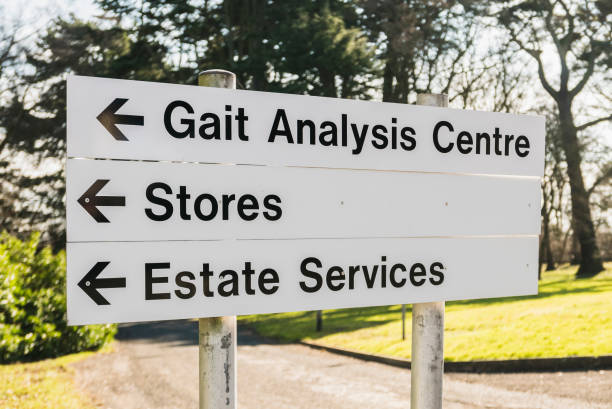Gait Analysis: Revealing the Mysteries of Human Development
Introduction

Human development is a mind-boggling transaction of muscles, joints, and neurological signs, an ensemble coordinated our focal sensory system. Gait, or how we gait, is a significant part of human versatility and has been a subject of interest for researchers, clinicians, and biomechanics specialists for a long time. Understanding the complexities of Gait goes beyond simple interest; it has significant ramifications for fields going from sports science to recovery medication. Gait analysis, a multidisciplinary approach that includes the deliberate study of strolling designs, has emerged as an integral asset for disentangling the secrets of human movement.
The Essentials of Gait Analysis
Definition and Meaning of Gait Analysis Stride analysis can be characterized as the orderly analysis of human strolling designs. At the same time, it could appear to be an apparent movement; strolling includes a refined interchange of different body frameworks. Gait analysis helps understand, measure, and diagnose irregularities in the stride cycle, offering essential knowledge about a person’s general well-being and valuable capacities.
The Gait Cycle The gait cycle, the arrangement of occasions that happen from one foot striking the ground to a similar foot striking the ground once more, fills in as the underpinning of stride analysis. Understanding the various periods of the stride cycle gives a system for evaluating and deciphering strolling designs.
Methods of Gait Analysis Gait analysis can be moved toward utilizing different strategies, going from straightforward observational methods to refined advancements. This segment dives into the various techniques, including visual perception, wearable sensors, force plates, and movement catch frameworks, featuring their particular benefits and constraints.
Clinical Uses of Gait Analysis
Orthopedics and Restoration Gait analysis are critical in muscular health and recovery medication. It helps clinicians distinguish and comprehend irregularities in strolling designs brought about outer muscle conditions or wounds. By pinpointing explicit issues, medical care experts can fit restoration projects to address the exceptional necessities of every patient.
Neurological Problems Neurological issues frequently manifest in unmistakable stride irregularities. Stride analysis is a demonstrative and checking device for conditions like Parkinson’s disease, numerous sclerosis, and stroke. Inspecting gait boundaries assists clinicians with following illness movement and assessing the viability of mediation.

Sports Science and Execution Improvement In sports science, stride analysis has become a fundamental device for enhancing athletic execution. Competitors, from sprinters to cyclists, go through gait appraisals to distinguish regions for development, forestall wounds, and upgrade productivity. This segment investigates how gait analysis adds to sports biomechanics and execution upgrades.
Mechanical Progressions in Gait Analysis
Wearable Innovation: The advent of wearable sensors has changed gait analysis considering ongoing, subtle observations of strolling designs in different settings. From accelerometers to pressure-delicate insoles, wearable innovations provide abundant information that can be dissected to acquire knowledge about a person’s Gait.
Motion-Catch Frameworks Movement catch frameworks, once saved for activity and gaming businesses, have tracked down broad applications in gait analysis. These frameworks utilize advanced cameras and markers to track the development of body fragments during strolling. This segment investigates the development of movement catch innovation and its effect on gait analysis.
Machine learning and artificial consciousness: The coordination of AI and computerized reasoning in gait analysis has opened new boundaries in information understanding. Calculations can now examine massive datasets, recognizing unobtrusive examples and connections that could escape the natural eye. This segment discusses the potential and difficulties of consolidating simulated intelligence in gait analysis.
Difficulties and Future Bearings
Interpreting InIntricacy, regardless of innovative progressions, deciphering the Intricacy of human Gait remains a test. Factors like individual inconstancy, flexibility, and the impact of mental variables add layers of intricate gait analysis. Scientists and specialists are investigating ways of refining current strategies to represent these complexities.
Accessibility and moderateness While super-advanced gait analysis devices give unrivaled accuracy, availability, and reasonableness remain critical worries. This part analyzes endeavors to foster financially savvy arrangements and democratize stride analysis, making it all the more generally accessible in clinical and research settings.

Final WOrds
Stride analysis remains at the crossing point of biomechanics, medication, and innovation, offering a window into the perplexing universe of human development. From diagnosing ailments to streamlining athletic execution, the uses of stride analysis are huge and steadily growing. As innovation keeps developing, opening the privileged insights of our Gait may upgrade how we interpret human physiology and prepare for inventive mediations that further form lives. Stride analysis is more than a logical undertaking; it is an excursion towards disentangling the verse of human movement,
| Aspect | Description |
|---|---|
| Definition | Gait analysis is the systematic study of human walking patterns, involving the observation, measurement, and interpretation of movements during walking. It provides insights into biomechanics for diagnostic, rehabilitative, and sports science purposes. |
| Purpose | To understand and assess walking patterns for various applications, including diagnosing medical conditions, designing rehabilitation programs, optimizing athletic performance, and preventing injuries. |
| Methods | – Visual Observation: Clinicians visually assess walking patterns. – Wearable Sensors: Devices like accelerometers and pressure insoles provide real-time data. – Motion Capture Systems: Cameras and markers track body movements with precision. – Force Plates: Measure ground reaction forces during walking. |
| Applications | – Healthcare: Diagnosis and treatment planning for musculoskeletal and neurological conditions. – Rehabilitation: Tailoring programs to address specific gait abnormalities. – Sports Science: Optimizing athletic performance and preventing injuries. |
| Technological Advances | – Wearable Technology: Enables continuous monitoring in real-world settings. – Motion Capture Systems: High-tech cameras and markers offer detailed movement analysis. – Machine Learning: Enhances data interpretation for more nuanced insights. |
| Challenges | – Interpreting Complexity: Accounting for individual variability and psychological factors. – Accessibility: Balancing precision with affordability for widespread use. – Continuous Monitoring: Overcoming challenges for long-term, real-world tracking. |
| Future Directions | – Refining Methodologies: Addressing complexities for more accurate interpretations. – Accessibility and Affordability: Developing cost-effective solutions for wider adoption. – Integration of AI: Harnessing machine learning for advanced data analysis. |
Faqs
What is gait analysis?
Stride analysis is an efficient analysis of human strolling designs, enveloping the different periods of the gait cycle. It includes the perception, estimation, and understanding of the development of the appendages, joints, and muscles during strolling. This multidisciplinary approach gives essential insights into biomechanics, helping specialists, clinicians, and sports researchers get it and evaluate a singular’s stride for indicative, rehabilitative, or execution enhancement purposes.
For what reason is gait analysis significant in medical care?
Gait analysis is significant in medical care in light of multiple factors. It recognizes and surveys irregularities in strolling designs, giving meaningful symptomatic data on a scope of conditions, including outer muscle issues, neurological illnesses, and wounds. Clinicians use gait analysis to tailor restoration programs, screen sickness movement, and assess the adequacy of mediation. In muscular health, it supports understanding what outer muscle issues mean for a singular’s Gait, directing treatment systems.
What strategies are utilized in stride analysis?
Different strategies are utilized in gait analysis, from basic observational to cutting-edge mechanical methodologies. Visual perception is an essential technique where a clinician outwardly surveys the patient’s Gait. Wearable sensors, like accelerometers and tension insoles, give constant information on strolling designs. Movement catch frameworks use cameras and markers to strictly follow body developments, while force plates measure ground response powers. Consolidating these techniques offers a complete comprehension of gait elements.
How Does Gait Analysis Add to Sports Science?
Gait analysis is essential in sports science supporting competitors in improving their exhibition and preventing wounds. Competitors, including sprinters and cyclists, undergo gait appraisals to recognize biomechanical shortcomings, deviations, or uneven characteristics that could influence execution. By breaking down gait boundaries, sports researchers can give customized preparation suggestions, assist competitors with refining their strategy, upgrade proficiency, and lessen the risk of wounds.

